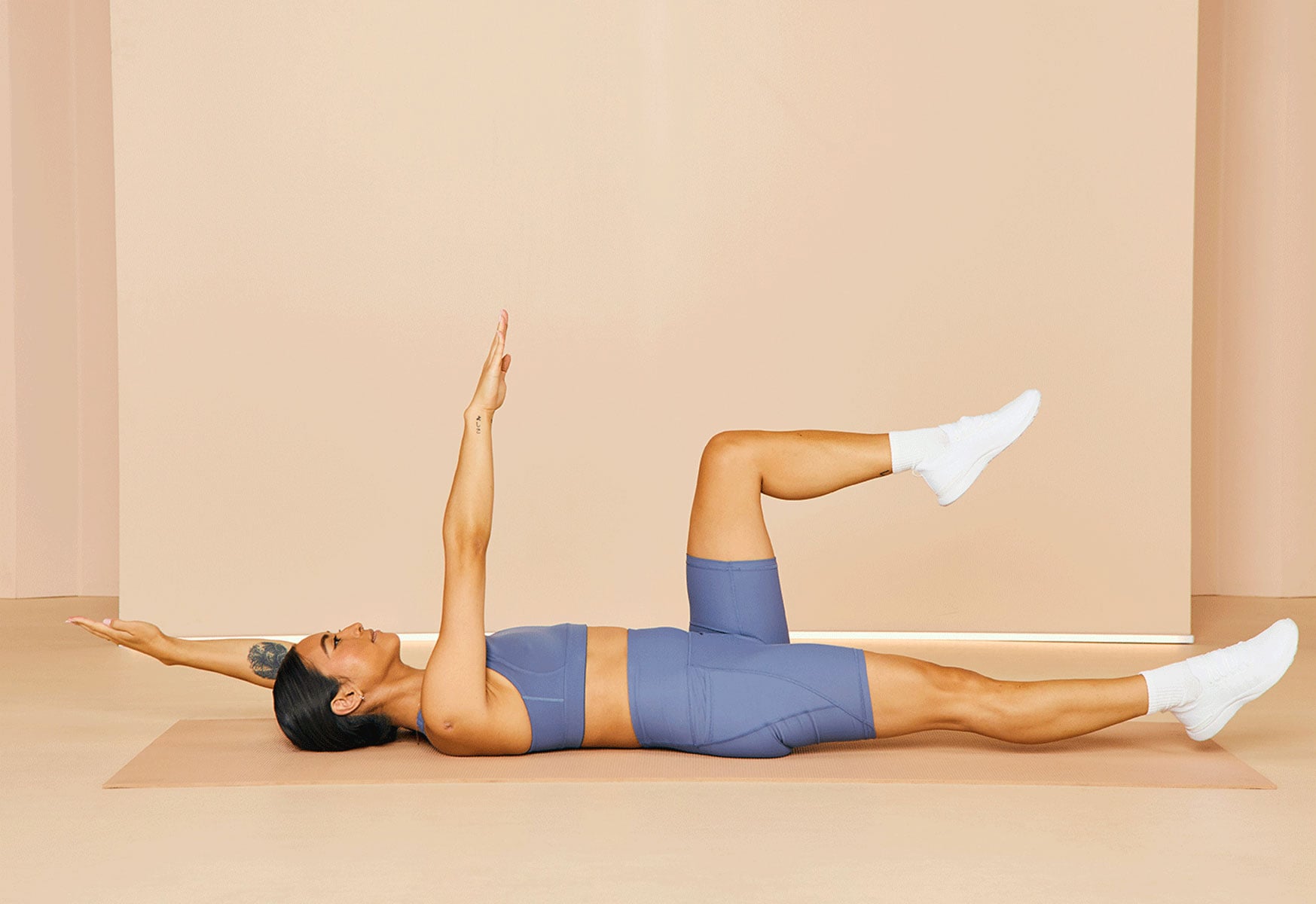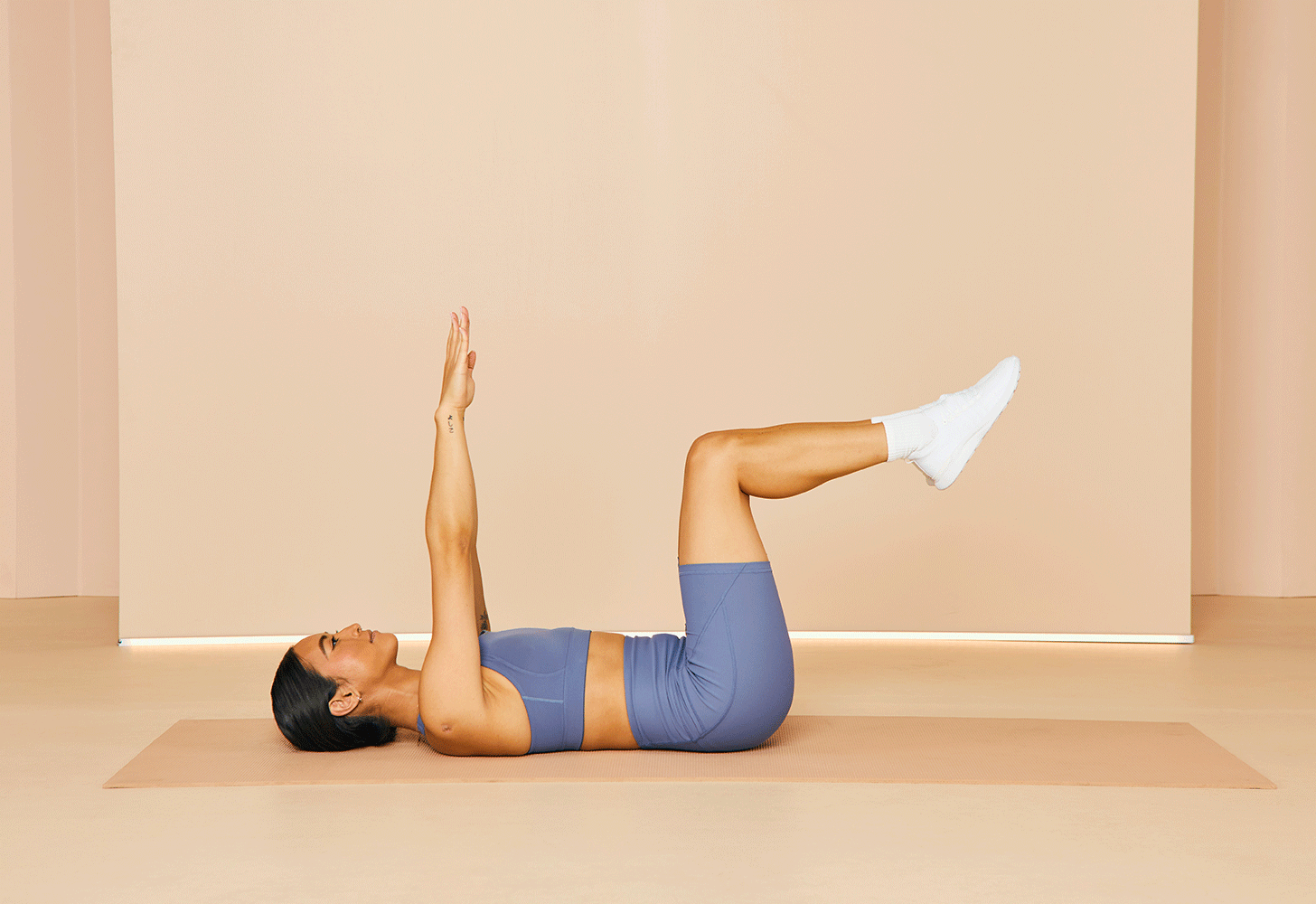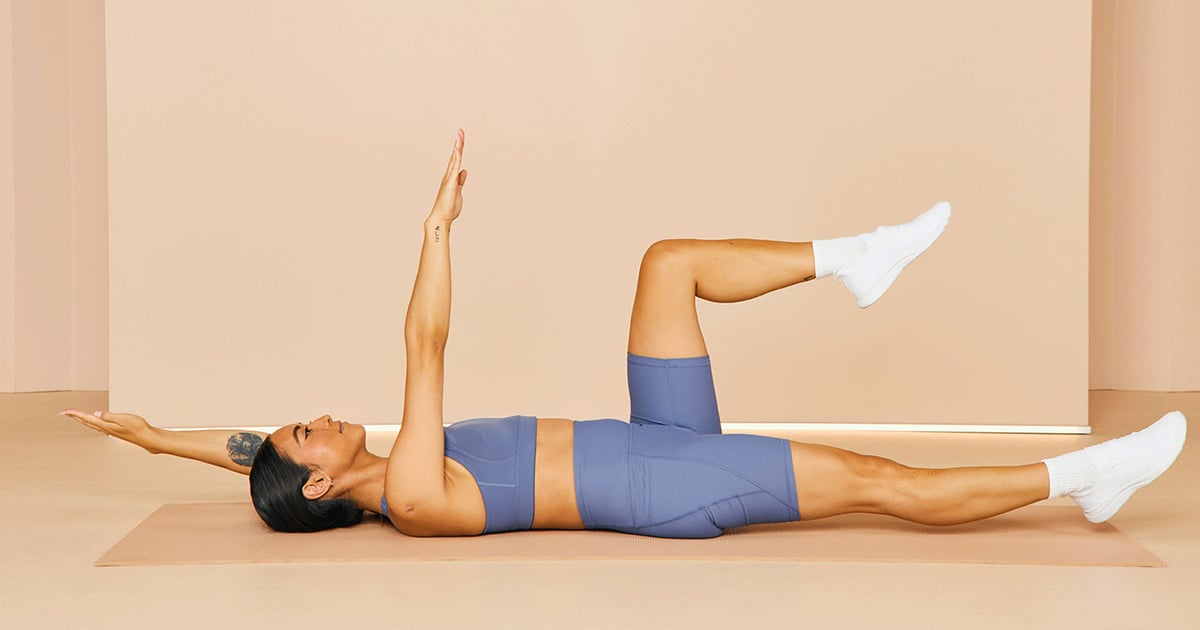Products You May Like

The dead bug exercise doesn’t sound like a glamorous core move. After all, what comes to mind is a dead roach or beetle on its back with its legs in the air. In reality, though, this beginner-friendly core move has a lot to offer — and there are plenty of reasons to add it to your exercise routine.
The biggest reason is because it’s a beginner-friendly, surefire way to build core strength and stability, which are both key to moving well in training and in life. In addition, doing dead bug regularly will contribute to better posture, coordination, power, and control. It can be performed anywhere on the go without equipment.
Ready to learn about this beginner-friendly move? Keep scrolling for everything you need to know about the dead bug exercise, including benefits, muscles worked, how to adjust it to different fitness levels, and step-by-step instructions to perform it safely.
The Benefits of the Dead Bug Exercise
The dead bug targets 360 degrees of core muscles, including the transverse abdominis (the deepest core muscle), rectus abdominis (the muscle in the front and middle of the abs), obliques (the muscles on the sides of your torso), and pelvic floor (the muscles along the bottom of your abdominal cavity, which work to hold up your internal organs).
Breanna Cummings, trainer for the NYC Nike Well Collective and Lifetime Fitness NYC, says the dead bug is a favorite to recommend for her clients. She describes it as a “functional movement that mimics daily life.” That’s because, compared to other core exercises like crunches or sit-ups, dead bug places the spine in a neutral position. It helps you build more core strength and stability while allowing your limbs to move freely — hugely important skills for moving through your day-to-day. “Think about how you carry groceries into the house, or pick up your favorite little human. All of these activities require a neutral spine, core strength, and stability,” she explains. The dead bug exercise also works shoulder and hip mobility, because it asks you to move your shoulders and hips through a large range of motion.
Its emphasis on core strength and mobility makes dead bug a great move for general strength and conditioning, as well as for athletes. For example, “runners need to be able to create power while keeping their core engaged in a neutral spine, so the better you’re able to perform the dead bug, the more efficient you will be,” Cummings explains.
If prescribed by a trainer, physical therapist, or doctor, dead bug can also be used to recover from injury and help with lower-back issues. The move is performed lying on your back and asks you to find and maintain a neutral spine, as well as a braced core; it’s also done slowly and, usually, in tune with your breath. This offers a really safe way to build core strength compared to more dynamic movements and helps people learn what it means to brace or engage your core.

How to Do a Dead Bug
Here’s how to perform a dead bug with safe and proper form, according to Cummings.
- Lie on your back on the floor. Lift your legs up to tabletop position, with your knees directly over your hips bent at 90 degrees and your shins parallel to the floor. Extend your arms toward the ceiling, stacked directly over your shoulders, palms facing each other.
- From this position, flatten your back to the floor by tilting your pelvis slightly upward. This is your starting position.
- Exhale to slowly extend one arm behind your head while simultaneously extending your opposite leg until it’s straight, hovering just off the floor. Try not to let your lower back lift off the floor (if it does start to lift, don’t lower your leg as far, as shown below).
- Hold for one second, then inhale to lift both your arm and leg back to the starting position.
- Repeat on the other side. That’s one rep.
Dead Bug Variations and Modifications
Even though dead bugs are a beginner-friendly move, there are ways to both decrease the challenge — so you can really connect to your core — and up the ante. Try these three dead bug variations.
Banded Dead Bug: Adding a resistance band usually makes an exercise harder, but in this case, it’s a modification; this dead bug variation helps you activate your core and breaks down the movement to just the feet. Try this modification if you’re having trouble moving both your arms and legs while keeping your core engaged. Loop a resistance band onto a pole or piece of furniture, then lie face-up on the floor so the band is just past your head. Holding onto the band with both hands, press your back flat onto the floor, and pull the band until your hands are above the middle of your chest. Lift your legs up to tabletop, and hold for 15-20 seconds. Next, try performing the dead bug movement with your feet only, holding the band in place above your chest.
Weighted Dead Bug: If you have access to a weighted plate or dumbbells, this is a great exercise. You only need to add 5-10 lbs. to this exercise. It works not only your core but also shoulder mobility. To do it, hold the weight in your hands and perform dead bug by moving the weights toward the floor as far as you can. Be careful here: you only want to go as far as you feel a stretch in your shoulder. If you go too far, you can put yourself at risk for shoulder injury.
Medicine Ball Iso Dead Bug: This one will set your core on fire! Grab a 5-8 lb. medicine ball. Lie on the floor, and place the medicine ball in between your right elbow and left knee. Engage your core, and press your back against the floor. Extend your opposite arm and leg in the usual dead bug motion while maintaining tension on your other elbow and leg to hold the medicine ball up. With this move, it’s important that you focus on your breath, breathing in and out through your nose. If the medicine ball is too heavy, you can substitute for a yoga block or a stability ball; all versions of this move make sure your core stays locked and engaged while you work the opposing side.
Image Source: POPSUGAR Photography / Chaunté Vaughn
